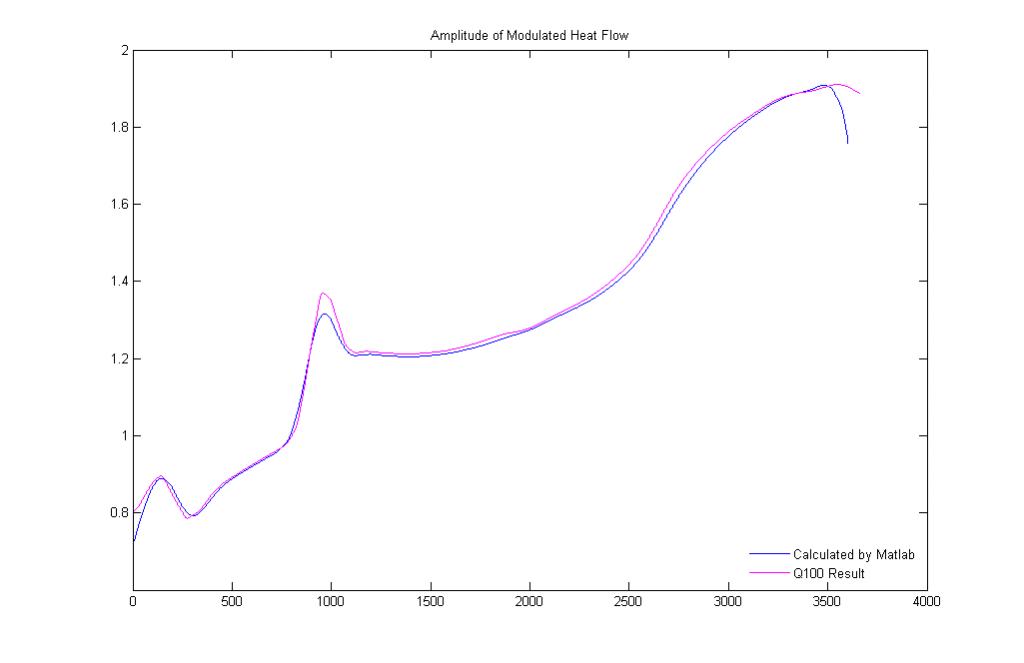可能在细节上, 还得考虑如何处理, 但是, 本质上,
所谓的用于Temperature modulated differential scanning calorimetry的Fourier Deconvolution,
已经被明白了.
close all
clear
clc
load MDSCdata %MDSCdata1 , 两个数据文件, 随便哪个都行
offset=1; % 0的时候算heat flow, 1的时候计算并比较temperature, 奇怪不是dT/dt却是T
x=data(:,13-offset);
figure; plot(x)
L=length(x);
N=120;
for k=1:1
xx=smooth(x,N);
end
xx=smooth(xx,'sgolay');
hold on, plot(xx,'g')
x=x-xx;
plot(x,'r:')
%break
theta=1:N;
theta=theta.';
theta=theta/N;
a=zeros(size(theta));
b=zeros(size(theta));
COS=cos(2*pi*theta);
SIN=sin(2*pi*theta);
for k=1:L-N+1
a=x(k:k+N-1).*COS;
b=x(k:k+N-1).*SIN;
a=sum(a)*2/N;
b=sum(b)*2/N;
y(k)=(a^2+b^2)^.5;
end
for k=1:1
y=smooth(y,N/2).';
end
figure,plot(y), hold on, plot(data(N/2:L,10-offset),'m')






如何把向量的长度一致化? 如何用amplitude计算Cp, 乃至进一步得到所谓的"可逆"和"不可逆"部分的分解...